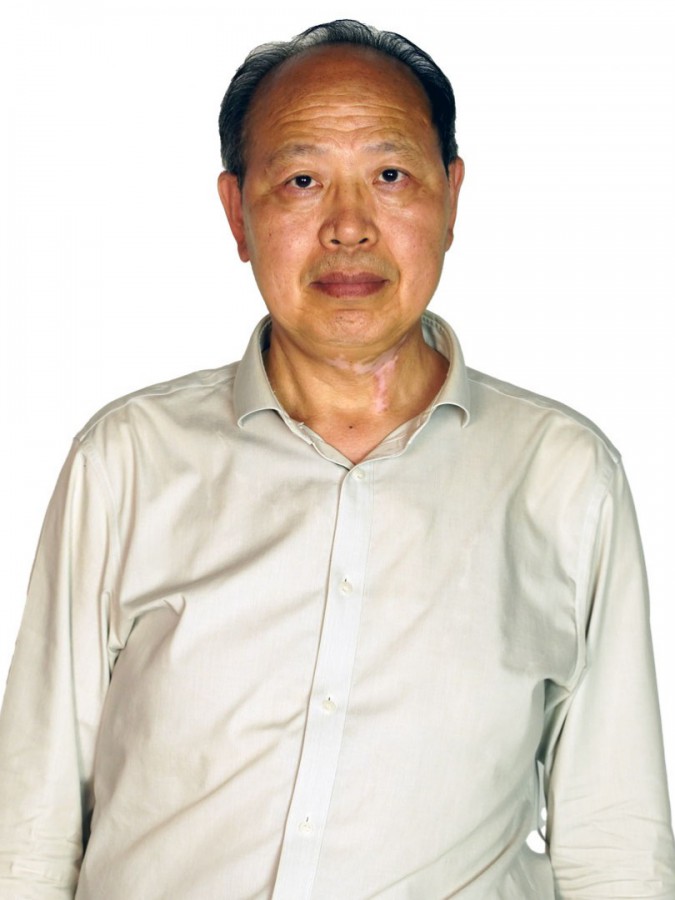abstract
A series of lanthanide-germanate oxo clusters, [Ln(8)(phen)(2)Ge-12(mu(3)-O)(24)T-12(H2O)(16)]center dot 2H(2)O [Ln = Dy (1a) and Er (1b); T =-CH2CH2COO- group; phen = 1,10-phenanthroline], [Ln(8)(phen)(2)Ge-12(mu(3)-O)(24)T-12(H2O)(16)]center dot 2phen center dot 16H(2)O [Ln = Sm (2a), Eu (2b), and Gd (2c)], and [Ho-8(phen)(2)Ge-12(mu(3)-O)(24)T-12(H2O)(14)]center dot 2phen center dot 13H(2)O (3), have been hydro-thermally synthesized from the reactions of bis(carboxyethylgermanium sesquioxide) and Ln(2)O(3) with auxiliary phen chromophores. Compounds 1a and 1b consist of cage clusters [Ln(8)(phen)(2)Ge-12(mu(3)-O)(24)T-12(H2O)(16)] and free H2O molecules, where cage clusters are arranged in a CsCl type, while compounds 2a-2c consist of cage clusters [Ln(8)(phen)(2)Ge-12(mu(3)-O)(24)T-12(H2O) free phen, and free H2O molecules, where cage clusters are arranged in a NaCl type. Compound 3 consists of the one-dimensional neutral chain [Ho-8(phen)(2)Ge-12(mu(3)-O)(24)T-12(H2O)(14)](n) and free H2O molecules. These compounds provide the first examples of p-f heterometallic [Ge-O-Ln] oxo clusters decorated by phen chromophores. The photoluminescent and magnetic properties of all compounds have been investigated.
keywords
SINGLE-MOLECULE MAGNETS; HETEROMETALLIC COORDINATION POLYMERS; LUMINESCENT HYBRID MATERIALS; METAL-ORGANIC FRAMEWORKS; PHOTOLUMINESCENCE PROPERTIES; HYDROTHERMAL SYNTHESIS; CRYSTAL-STRUCTURES; WATER NETWORK; COMPLEXES; LIGAND
subject category
Chemistry
authors
Tan, XF; Zhou, J; Zou, HH; Fu, LS; Tang, QL
our authors
acknowledgements
This work was supported by the NNSF of China (Grants 21671029 and 21601038), the NSF of the Chongqing municipality (Grants cstc2014jcyjA50002 and cstc2015jcyjBX0117), Fundacao para a Ciencia e a Tecnologia (FCT, Portugal), the European Union, QREN, FEDER through Programa Operacional Factores de Competitividade (COMPETE), and CICECO, Aveiro Institute of Materials, POCI-01-0145-FEDER-007679 (FCT ref. UID/CTM/50011/2013), financed by national funds through the FCT/MEC and when appropriate cofinanced by FEDER under the PT2020 Partnership Agreement, a program for leading talents of scientific and technological innovation in the Chongqing municipality (Grant CSTCCXLJRC201707), and the Program for Excellent Talents in Chongqing Higher Education Institutions. The authors are also grateful to Chongqing Normal University for financial support (Grant 14CSLJ02), Graduate Innovative Research Projects of the Chongqing municipality (Grant CYS16147), and the Innovative Training Program of University Student (Grant 201610637008).


